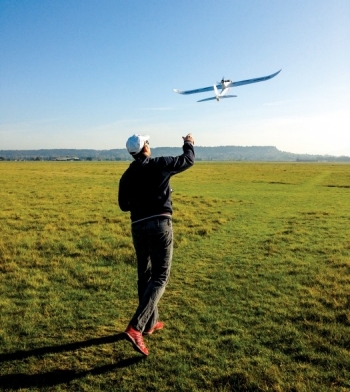Source: Chemical and Engineering News, By Sarah Everts and Matt Davenport
Every year, an estimated 30–40% of crop yield is lost to agricultural pests—an alarming statistic for those concerned with food security, our planet’s rising human population, and the imminent threats to crops laid bare by climate change.
Although scientists have long studied plant pathogens, most of the work has been at the microscopic level, learning the basic biology of these pests, or at the macroscopic scale, learning how these pests travel across continents by collecting samples near the ground, says Virginia Tech’s David G. Schmale III. What’s missing is a detailed understanding of pathogens’ so-called mesoscale transport. That’s transport that takes place over tens or hundreds of kilometers, from one infected field to another in the next county or state.
This is where drones can help. Schmale’s team studies the travel plans of these tiny plant predators by following them through the air with a variety of unmanned aerial vehicles (UAVs) carrying everything from petri dishes to surface plasmon resonance machines that can capture and detect specific pathogens on specially designed surfaces. In particular, Schmale has his eye on the fungus Fusarium graminearum, which he says is “a very common pathogen of corn and small grains that you find in virtually every wheat, barley, or corn field in the U.S .”
The fungus delivers a one-two punch to crops: First, it interferes with plant growth by shriveling and shrinking kernels, which results in a reduced harvest. Second, F. graminearum produces a potent toxin called deoxynivalenol, which is also known as vomitoxin because of its deleterious effects on the digestive tracks of humans and cattle that have eaten infested crops.
“We do release-and-recapture experiments,” Schmale says. To distinguish between F.graminearum his team releases and members of the species already hanging around, Schmale scours spores looking for individual pathogens that have an unusual sequence of DNA. He and his team then grow cultures of a given microbe and release it. This unusual genetic sequence acts as a tag, so the team can track the microbe’s movements.

